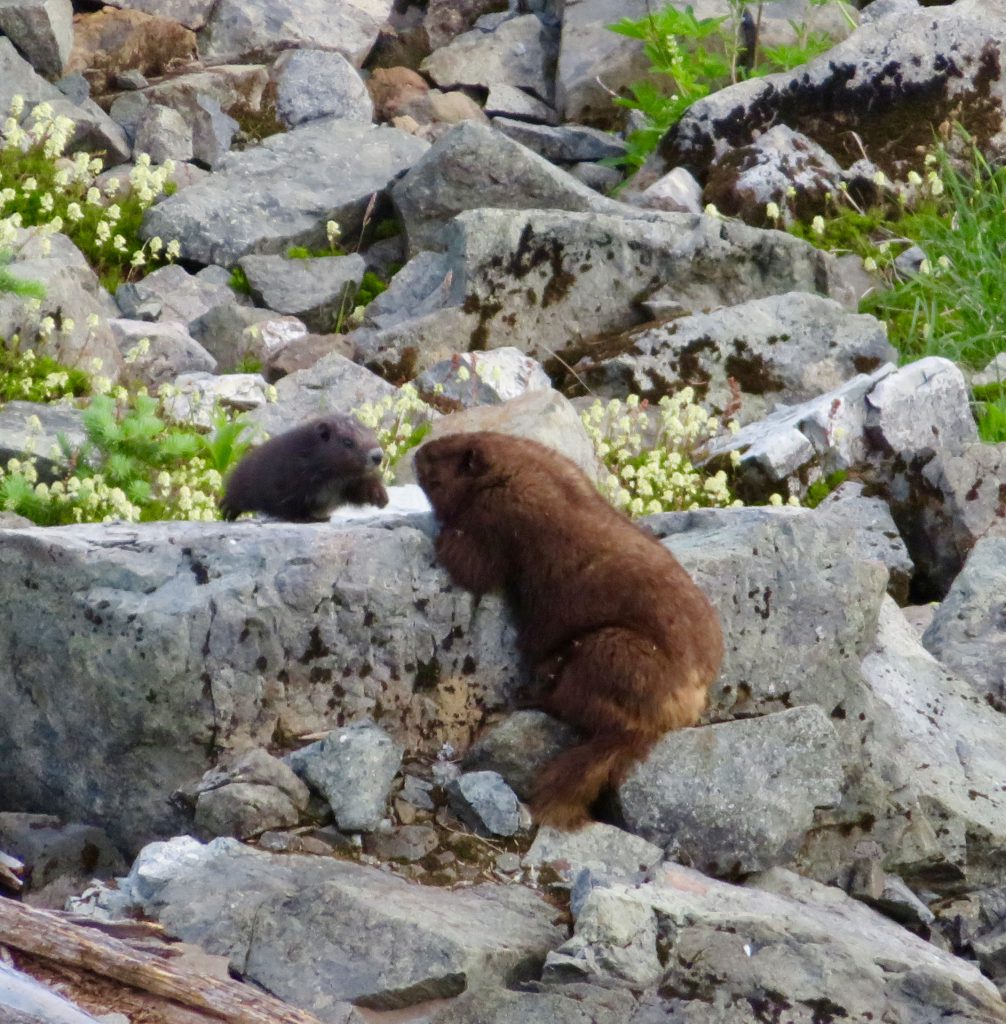Vancouver Island marmots making a comeback in Strathcona Park
Categories:
During a recent routine check of a marmot colony near Castlecrag Mountain in Strathcona Provincial Park, a pair of researchers discovered a welcome surprise.
Molly the marmot, an offspring from one of the first Vancouver Island marmots released into the wild nine years ago, had produced six pups of her own. It is an accomplishment Adam Taylor, executive director of the Marmot Recovery Foundation in Nanaimo, calls incredible.

“We were thrilled. It’s definitely rare,” said Taylor, noting the marmots generally have three to four pups every other year. “Not only has she given birth to six pups, she’s also managed to ween them. For her to accomplish that means she’s in really good health, and that’s really important for us.”
The birth of six pups adds to the growing success story of how one of the most endangered mammals in the world is slowly making a comeback. Nine years ago, marmots in Strathcona Park were completely wiped out. Disease, climate and landscape changes were pegged as possible factors contributing to their mysterious disappearance from alpine meadows that may have once supported hundreds of marmots.
Now there are between 40 to 50 marmots in the park. This success is thanks to recovery efforts led by partnerships between a number of organizations, including the Marmot Recovery Foundation, the provincial government, zoos and landowners. Many of the animals can be traced to captive breeding programs in the Calgary and Toronto zoos.
Erica McClaren, a BC Parks biologist, is on the marmot recovery team. She provides advice on the research being conducted in provincial parks, and where the marmots (which are equipped with radio-telemetry transmitters) should be released. Being part of the team is an experience she describes as challenging, but rewarding.
“Recovery team members provide direction on how many animals are taken from the wild into the captively bred population to help boost wild marmot numbers in future years. These decisions are emotionally tough, but critical to the recovery of this extremely rare mammal,” said McClaren, who is also supporting a campaign for the public to report marmot sightings in Strathcona Park. “Because of all the peaks and valleys, it can be a hard area to find them using radio-telemetry, so we do rely on public sightings and reports.”

During the last two years, researchers have seen surprisingly good marmot reproduction in Strathcona Park, with at least 12 pups born in 2017 and 11 the year before. Another 70 to 80 marmots are found in a handful of colonies within private lands owned by forest companies west of Nanaimo. Another colony lives at Mount Washington, bringing the total population between 150 and 200.
Taylor is keeping his fingers crossed the baby boom will continue, but he knows his work is far from over. The population is still too small to overcome its annual mortality rate on its own.
“There simply aren’t enough of them. That’s the biggest challenge,” said Taylor. “The species is still in danger, but we are being successful in recovering them. Molly’s pups really are a symbol for us of what we’ve been seeing in Strathcona Park over the last couple years. The population is growing, but it’s taking time.”
The Vancouver Island marmot is one of 14 marmot species found around the world and one of the five mammal species endemic in Canada. It is also the only endemic Canadian mammal species listed as endangered, and B.C.’s only endemic mammal species of any kind.
How You Can Help
Anyone who sees a Vancouver Island marmot is encouraged to report the sighting by calling 1 877 4MARMOT (1 877 462-7668) or emailing: marmots@telus.net
More information on how to report marmot sightings can be found at: marmots.org/observer- program
For more information on the Vancouver Island marmot, click here.




